As folks travel down the road of life, it is an interesting journey with many experiences and emotions. It also has many issues in the journey that force us to choose between right and wrong. No one can claim a 100% journey on the side of good. There is only one man who lived a perfect life.
In the early days of law enforcement in this country there were many examples of individuals who had both worn a badge and committed crimes. Our two principal fellows in this story illustrate the old saying that sometimes it takes one, to catch one.
A VILLAIN NAMED CASEY
Noted outlaw Bert Casey was involved in various robberies and murders. He and his family and friends became more violent as they followed the outlaw road. In 1894, they shot and killed Canadian County Deputy Sheriff Sam Farris near Yukon, Oklahoma Territory (O.T.). One of Casey’s relatives was wounded in the foot during this shootout and died from the injury while in jail in Oklahoma City. Another relative, Jim Casey, who was also in the Oklahoma City jail, broke out with Bill and Bob Christian and in the process, Jim killed Oklahoma City Police Chief John Milton Jones. Shortly after that, Jim Casey was killed by other officers.
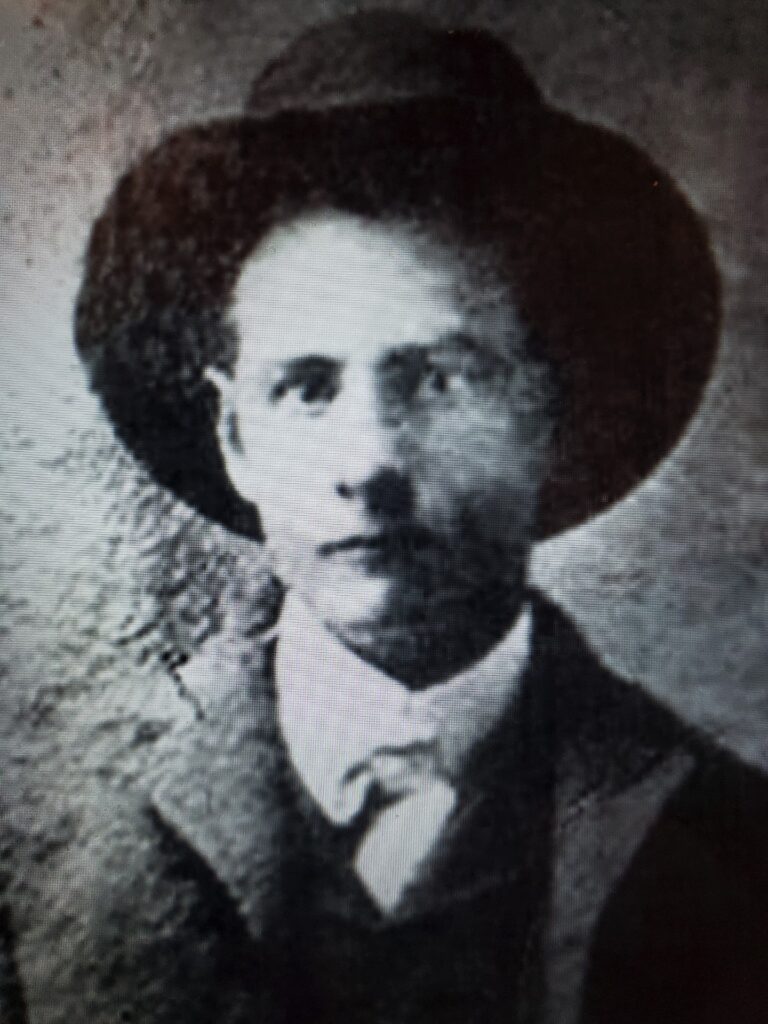
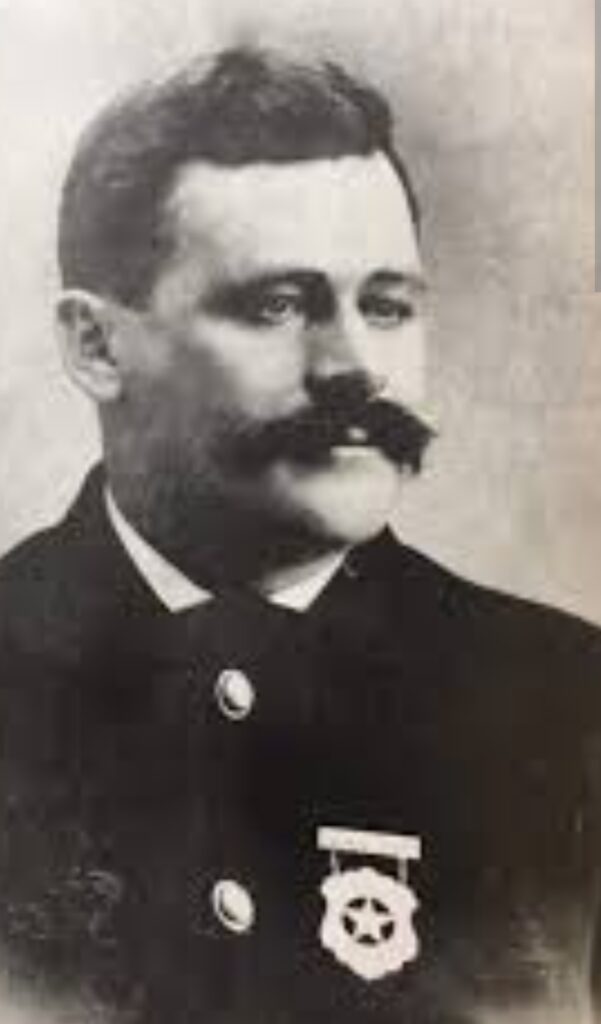
Bert Casey and companion were in the vicinity of Anadarko, Oklahoma around mid-January 1902, where they were planning a robbery of the Bank of Mountain View, Oklahoma Territory. Sheriff Frank Smith and two deputies, George Beck and Will Briggs, of Caddo County, went to the area in search of them. On January 15, the officers found a house where they thought the robbers might be.
They were right. As the officers approached the structure, gunfire broke out and Sheriff Smith and Deputy Beck fell. Both were killed. Deputy Briggs raced back to Anadarko to get help. Multiple possess swarmed the area, comprised of law enforcement officers, former officers, and volunteers. One former officer sent word to Officer Gus Bobbitt in Ada, O.T., to be on the lookout for the killers in the Ada area.1 Unfortunately, Casey and his partner escaped the search.


CASEY’S TRAIL OF DESTRUCTION CONTINUES
On June 30, 1902, Sheriff Andrew Jackson Bullard of Roger Mills County, O.T. and Deputy Sheriff John Cogburn went to check on a suspicious group that might be the Casey gang.
It was. While in the camp, Sheriff Bullard was shot eleven times with three different calibers, in spite of which, Bullard managed to draw his revolver and fire two rounds. Deputy Cogburn was shot once in the back. Both men were dead.



Even though as time wore on, some members of Casey’s gang were captured and others shot, the leader remained at large.
DESPERATE MEASURES
Chief Deputy U.S. Marshal W.D. Fossett was under pressure from U.S. Marshal C.H Thompson to stop Casey. Fossett remembered an old adage, it takes a thief to catch a thief, sometimes. It just so happened that he had some Casey alumni upstairs in the Federal jail at Guthrie, O.T., so Fossett had a sit-down with Wes Hudson, who was in jail for a post office robbery.
William Wesley Hudson was born in Boone County, Arkansas on March 25, 1878. He came from a good family. His father was a stockman. As a young man growing up, he became an excellent horseman and developed a fondness for shooting handguns. He became very proficient in the use of revolvers.

Around 1900, the lure of traveling West led him to Oklahoma Territory. We don’t have much record of his early activity, but we do know he was acquainted with outlaw Bert Casey by the time he wound up in federal jail.
Fosset offered to get Hudson’s charges dropped in exchange for going after Casey as a Deputy U.S. Marshal. Hudson agreed to Fossett’s terms if he would allow fellow inmate Ed Lockett the same deal. Fossett agreed, gave both men federal commissions as Deputy U.S. Marshals, guns, and horses, and sent them after Casey in August, 1902.
Months went by with no results and I’m sure Marshal Fossett was sweating excessively. A third undercover, Deputy U.S. Marshal, Luther “Lute” Houston, was deployed when no word had been received from Hudson and Lockett.

Finally, a telegram arrived at the Marshal’s office in Guthrie on November 3, 1902, that caused a huge sigh of relief and a few headaches. Casey was dead. During the arrest attempt, Casey and one of his gang tried to draw to the drop, and failed. Both outlaws were killed by former outlaws Hudson and Lockett, under the color of law.

Casey was dead, but Marshal Houston was still unaccounted for. A body that was found five days before Casey was killed was eventually identified as Houston.

HUDSON BACK IN TROUBLE
Young Wes Hudson had received a nice reward of $1,000 (out of over $5,000 in rewards promised) for Casey. He unpinned his badge and headed for Boone County, Arkansas. Lockett moved on too, and was shot and killed by officers – believed to be in Arkansas.
Hudson had spent his time in his home territory seeing family and friends and enjoying his notoriety. In February of 1903, he drifted down to Jasper, Arkansas. On February 3, 1903, he was making the rounds of the saloons and soon became intoxicated. As those who are under the influence often do, he began a disturbance. The Jasper City Marshal was summoned, and because he probably knew who he was going to have to deal with, Marshal Allen enlisted back up from Deputy U.S. Marshal James D. Keys.
Hudson saw the officers approaching him and drew his revolver. Marshal Allen and Marshal Keys both fired two shots at Hudson, who fired four shots in return at the officers. Hudson was hit in the chest, but the bullet struck a rib and was deflected. One of Hudson’s shots hit Deputy U.S. Marshal Keys in the stomach, and he died from the wound two days later.
Hudson was arrested and placed in jail at Harrison, Arkansas. He escaped, was recaptured, and then let out on bond. Go Figure. Hudson was tried on a charge of murder with a change of venue in Marshall, Arkansas, and found not guilty.
ANOTHER ROUND
It had not even been a year after he was acquitted that Hudson killed again–this time at the State Line Saloon (between Missouri and Arkansas), four miles north of Omaha, Arkansas. The bartender there, Henry Barchman, and Hudson became engaged in some sort of argument and the result was Hudson pulled his revolver and killed Barchman. Before Missouri and Arkansas officers could sort out whose jurisdiction it was, Hudson had fled.
He went to Little Rock, Arkansas, and fell in with the sporting crowd at the poker tables. Nervous about being arrested for his latest killing, Hudson went to Louisiana, visiting New Orleans, Shreveport, and Mer Rouge. While in this northeast Louisiana town, he got married. In addition to getting married in this short time there, he also killed another man.
Mr. and Mrs. Hudson went back north to Little Rock. They registered in a hotel using the name Shaw.
The Little Rock police got wind that Hudson was back in town. Chief of Police J. J. Hawkins and Detective Tom Newland found him in a saloon on the 21st of June, 1905. He was arrested without incident and waived his extradition to Missouri authorities. He was tried in Taney County, Missouri and once again, unbelievably, found not guilty.
WARRANT SERVICE
At that time, Hudson and the Mrs. moved to Perryville, Arkansas. A few weeks after they arrived, his wife became ill and died.
After the outlaw/marshal had been released, the Little Rock police were notified there was a Homicide warrant for Hudson out of Caddo County, O.T., for his role in the murder of Deputy U.S. Marshal Houston, the third man sent after Casey. Deputy U.S. Marshal “Lute” Houston’s body had been found, and it was discovered he had been hanged by outlaws, including Wes Hudson. Caddo County Deputy Sheriff James C. “Big Jim” Bourland was sent to Arkansas to arrest Hudson.
While passing through Arkansas on the train, Deputy Bourland chanced to see his fugitive standing on the station platform when the train made a routine stop at Perryville, a short way west of Little Rock. With the assistance of Rock Island Railroad Detective McIntosh, Deputy Bourland was able to disarm Hudson and arrest him. When the extradition papers arrived, Bourland took his prisoner to the jail in Caddo County, O.T.. Deputy Sheriff Bourland, as was common back then, also carried a concurrent commission as a Deputy U.S. Marshal.

ROOTS OF CONFLICT
According to Bourland family genealogy papers, Big Jim may have also spent time on the other side of the badge. By this account, Bourland used several aliases including, Morgan, Williams, and then Will Wade. He and several other outlaws were thought to be the robbers of the train at Pond Creek, O.T. in 1894. He also is supposed to have served penitentiary time in Texas. Good, bad, white hats, black hats, bandit masks, badges – gets confusing, doesn’t it?

After resting a while in the Caddo County Jail, Wes Hudson’s trial for his part in the murder of Deputy U.S. Marshal Luther Houston began in May of 1906. The trial was of short duration, and would you be shocked to learn that, once again, Hudson was found not guilty? Teflon before Teflon was even invented. May speak to the number of nighttime necktie parties in that era.
Hudson was called as a witness in trials of other folks charged with killing Houston. The trials were held at Hobart, O.T. and when Hudson was released from his testimony, he returned to Anadarko. He arrived on May 22, 1906, and he was arrested by Deputy Sheriff Bourland for carrying a handgun. To say there was bad blood between these two would be an understatement.
END GAME
Hudson obtained another handgun in .32 caliber and went on with trying to reduce the on-hand supplies of alcohol in the town saloons.
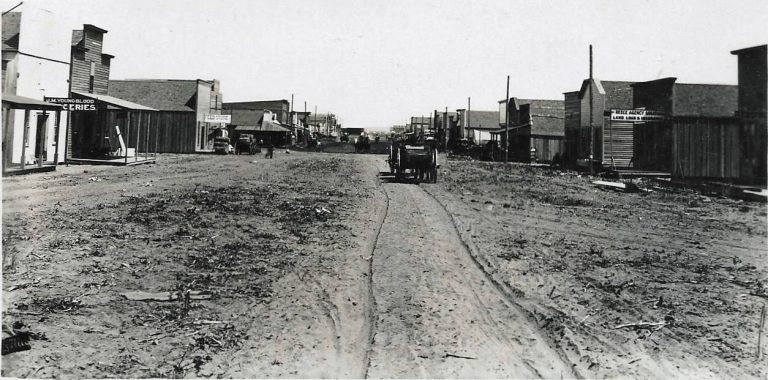
One account states that Bourland was notified that Hudson was in a bar drinking and appeared to be armed. Bourland entered the Robinson Saloon between midnight and 1:00 a.m. and saw Hudson, who also saw Bourland enter. Simultaneously, both drew handguns—Hudson’s .32, and Bourland’s .45 caliber–and started firing at each other until unable to continue. Bourland got off four shots, with two misses and two hits, one in each of Hudson’s legs. Bourland was struck with a single shot to the stomach.
Having both inflicted mortal wounds, they fell to the floor. Both combatants were removed to the hospital. Bourland died late that evening. The doctors told Hudson they needed to amputate. He refused for a time, then when he finally consented, it was too late. He died at midnight on Thursday May 25, 1906.

SINNERS
This article details one of hundreds, if not thousands, of stories of criminals and lawmen that defy belief.
Yes, there have been bad men that wore a badge. With very light digging you can find bad men and women in most any profession. Humans are prone to sin. Some folks are diligent and successful at avoiding it, but often fail at some point in their lives.
We all have a murderer in our family tree. His name was Cain.
All throughout the history of mankind, there have been struggles with both man’s laws and God’s laws. Criminal justice systems and their various punishments have not succeeded in stopping crime. I don’t expect there ever will be a total solution to the violations of man’s laws.
I do have two strong beliefs on this subject. One is that I never want to see this world without law enforcement. Your wildest imagination could not begin to describe what life would be like without law enforcement.
The other strong belief I have is that we are all sinners against God’s laws. Thankfully, God allowed His Son to be sacrificed on the cross. He died to wipe our sins away. All it takes is to believe in Him and repent of our sins.
I wish the crime problems that infest our lives could be removed, but I don’t think they will be in this world. Good and evil will rage on until the end.
That end may just be in our time, ask yourself – are you ready?
God Bless each of you and your loved ones.
-Tony Perrin
*****
REFERENCES
These events that I write about are all true, even though they do often seem unbelievable. The ones I enjoy most are those that are not as well-known as the major league criminals. I first learned of this subject while a member of a now-defunct group called Oklahombres. One of the members wrote a book that had many stories in it, including the Wes Hudson story. Mr. Ken Butler wrote the books Oklahoma Renegades and More Oklahoma Renegades. He was a fine researcher and author.
Another member, Robert Ernst, also served as a historical consultant to the U.S. Marshal’s Service, and wrote an excellent book called Deadly Affrays, documenting line of duty deaths of U.S. Marshals and deputies. Bob was a retired law enforcement officer also.
Thanks to Ken and Bob, both fine men, who have gone on to their reward!
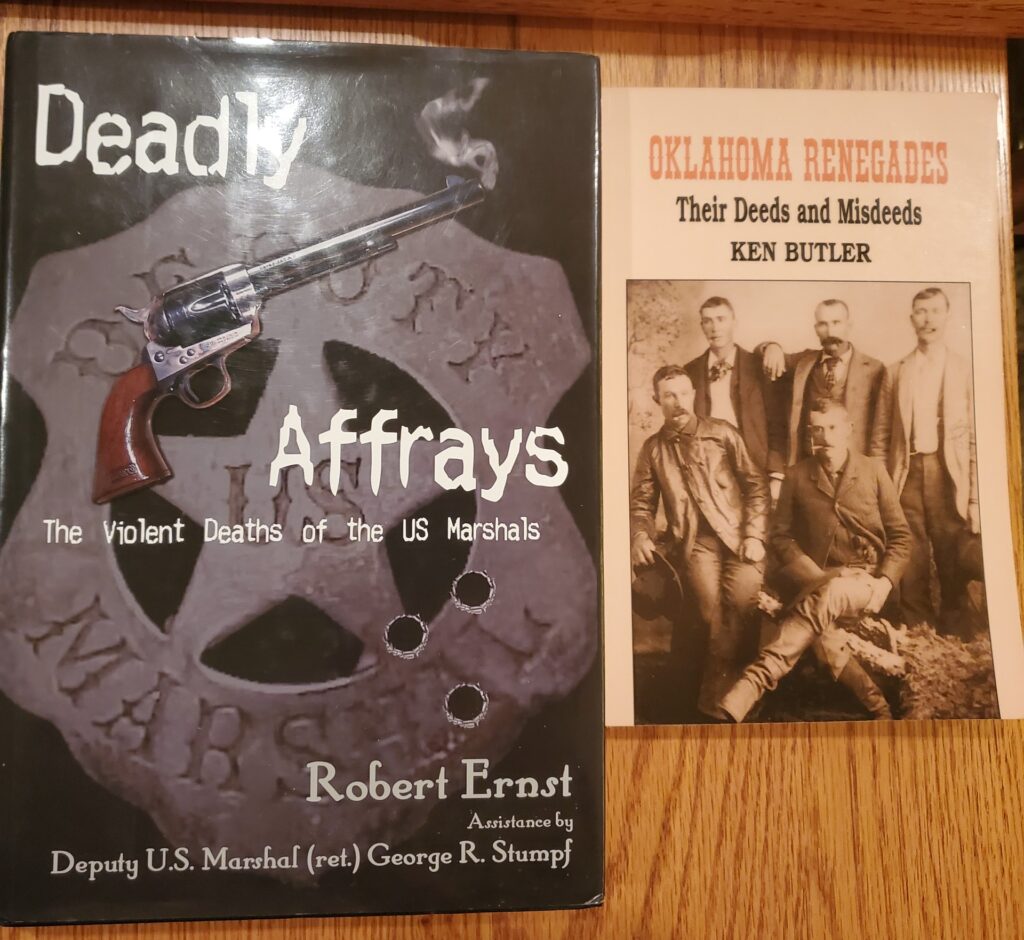
Other sources include a newspaper article written by a relative of Wes Hudson. The Boone County, Arkansas Historical Society also has material on the subject.
Readers are encouraged to visit the United States Marshal’s Museum in Fort Smith, Arkansas, where they can find more information about the history of this agency and the men and women who have served as U.S. Marshals.
ENDNOTES
1.) Later, on February 28, 1908, Gus Bobbitt was murdered from ambush by contract killer Deacon Jim Miller. Miller was a native of Arkansas. He was alleged to have murdered his grandparents when he was 8 years old in Evant, Texas. At 23, he shot and killed his brother-in-law as the man slept.
Being devout a Methodist, is where he got the name “Deacon”. Miller married Sallie Clements, John Wesley Hardin’s cousin. He also served as Deputy Sheriff in Reeves County, Texas, and later as a Texas Ranger for a time, then onto his career as a frontier hit man.
That got him a starring role in one of the most iconic images in the Old West. He was hired by two ranchers in Oklahoma, Jesse West and Joe Allen, who used B. B. Burrell as a middleman to hire Miller to kill former officer Gus Bobbitt, which Miller did. Shortly, all four participants were in the Ada jail. In the early morning hours of April 19, 1909, a mob broke into the jail and took the four to a nearby stable and hung them.

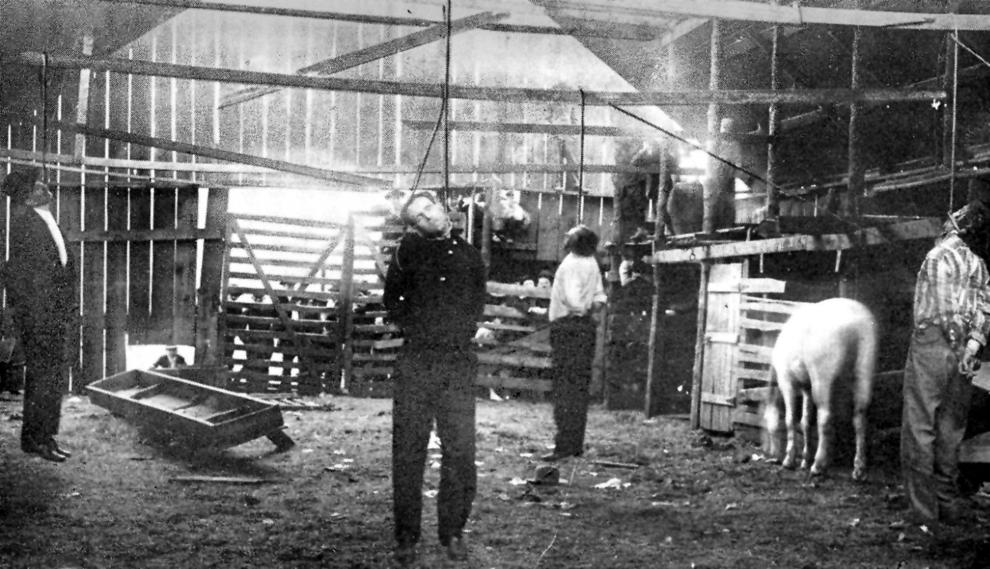


Although American law enforcement today sometimes has its bad apples and flaws like all professions, it’s light years better than the “old days”. Thanks, Tony, for this enlightening history.
Spencer what is that old advertising line ? “You have come a long way Baby!”.
As long as we keep improving we are going in the right direction.
Tony, this was a superb writeup. The more things change, the more things stay the same. Too many times you can’t keep track of all the players without a score card.
Your statement: “Your wildest imagination could not begin to describe what life would be like without law enforcement.” is SO true. One only has to remember places like Columbia (S.A.) in the days of Pablo Escobar, and other countries in Central and South America where narco cartels run the governments and control the police. Even worse is government sanctioned lawfare against citizens. Such corruption of law, law enforcement and the judicial process puts that society on par with narcostates. To say countries like these are hell holes is an understatement.
Unfortunately, in 2024 we still have corruption in law enforcement (and judiciary) at various levels. While it may take many different forms and degrees, it nonetheless affects everyone on the job and the civilian population in particular. You also aptly illustrated that the term ‘Arkancide’ (attributed to a prolific female crime syndicate boss from Arkansas of the late 1980s to the present) is nothing new.
If it were not for the sin nature imparted to humans, there would be no need to laws, hence no need for law enforcement. You are correct that no system of justice is ever going to be perfect because it is run by fallible and corruptable humanoids. As individuals, we have to be prepared to protect ourselves and our loved ones.
As the old saying allegedly goes: A Smith & Wesson beats Four Aces.
Thank you s. Bond for your comments. Very glad you enjoyed the article.
Very interesting story Sir! Your writings really intrigue me and make me wonder how many other stories like this exist. Thank you for bringing the stories of these men and events to us!
Mark if I had to guess how many strange stories are out there I would say the number is a lot higher than this old country boy can count.
Thank you Sir.
Thank you, Tony, for another excellent “The Day” story. Like S. Bond pointed out; the more things change- the more they stay the same. Evil infiltrating into law enforcement is certainly not a new affront, and you rightly point out the cause. The wisdom in your last paragraph rings particularly true and I agree 100%. Without Cops willing to stand in the gap, our country falls off the cliff in short order. We can prep for that chaos diligently, but you give the best advice for readiness for the end of the world as we know it. It may indeed be in our lifetime, the way things are looking. God bless you and yours as well…
Kevin it seems like folks are divided into those who see and are aware and those who don’t want to see and those who stick their head in the sand.
Stay safe Brother.
Damn. If I ever get in trouble, I’ll look into resurrecting Wes Hudson’s lawyers. I’m sure those hung juries and acquittals were the result of great lawyering, and no money flowed into the hands of fairly “have-not” jurors, right?
Re the picture of the miscreants swinging in the barn, I used to have that very picture. I don’t know what happened to it. Now I have to look through all my old junk to see if I still have it. Thanks a lot.
Thank you for a great story. It’s easy to see why the old Indian (Oklahoma) Territory and its environs were a staple in stories like “True Grit” and so many others. Chicago in the 20s has nothing on the Southwest in the late 19th and early 20th centuries.
You speak the truth 1811. Glad you enjoyed the article. Went through Ada not too long thinking the old structure the image was taken in might still be standing. Nope, it’s dust now.
You and yours have a good Thanksgiving.
“Deacon” Jim Miller definitely was a real murderous piece of work who was also called “Killin’ Jim” Miller and “Killer Miller”. In the hanging photo depicted above, Miller supposedly is the one wearing the dark suit and hat. According to the necktie party attendees, while the other criminals squealed for leniency, “Killin’ Jim” died game .